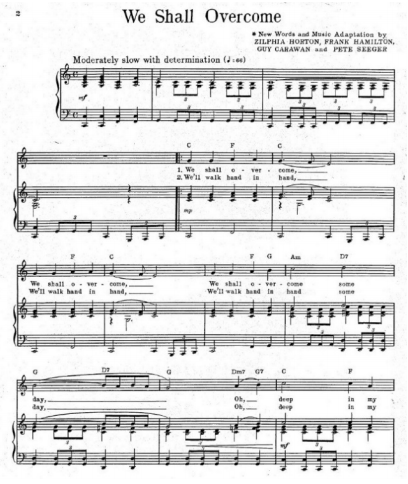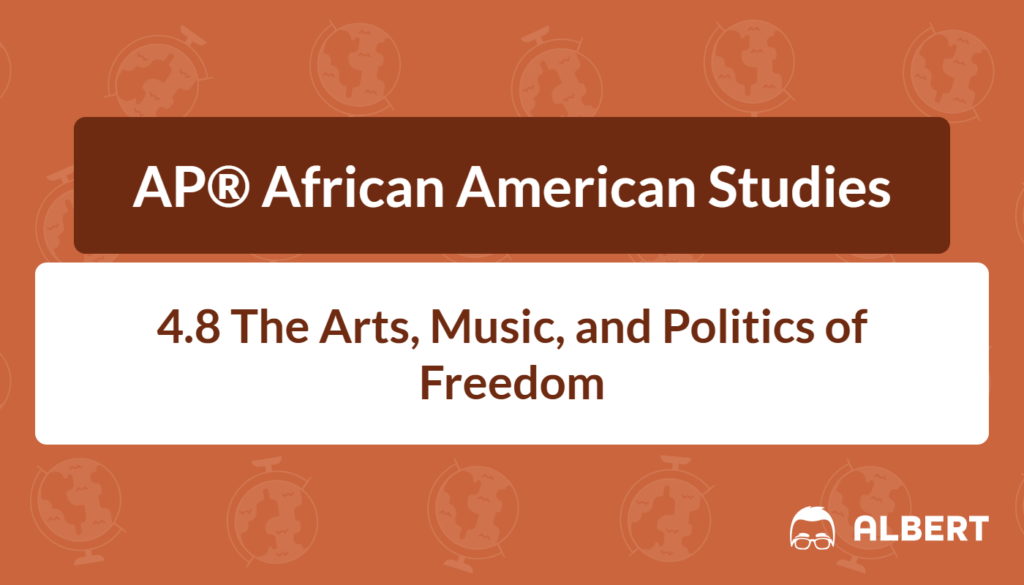What We Review
The Arts, Music, and Politics of Freedom
Art, music, and literature have been powerful forces in social movements around the globe. During the Black Freedom Movement, these creative expressions were essential in shining a light on the struggle for racial equality. Artists and musicians throughout the 20th century used their talents to challenge discrimination and bring attention to racial injustice. Their works continue to inspire students seeking a deeper understanding of history and its influence on today’s social challenges.
The Role of Artists in the Black Freedom Movement
Artists have always played a special role in advocating for racial equality. By illustrating the injustices faced by Black communities, they encouraged people to question oppressive structures and support ongoing campaigns for justice. Many of these creators inspired international audiences, which added strength and visibility to the broader movement.
- They highlighted the connections between different areas of the African diaspora.
- They raised awareness of anti-Black racism and provided hope through their works.
- They emphasized shared experiences and fostered unity across cultural lines.
Example: Nicolás Guillén
Nicolás Guillén was a famous Cuban poet connected to the Negrismo literary movement. Through his poetry, he explored the cultural experiences of people of African descent in Latin America. His works criticized segregation and exposed the universality of Black struggles.
However, Guillén went beyond condemnation. In 1958, he wrote a poem called “Little Rock,” targeting the racial violence and hatred faced by Black students in Arkansas. Step by step, he used vivid imagery to compare these issues to similar acts of racism in Latin America. Therefore, Guillén successfully united readers from different backgrounds and emphasized the global nature of the fight for racial equality. His poetry reflected Essential Knowledge (EK) 4.8.A.2, which notes how writers like Guillén showed the ties between anti-Black racism across borders.
The Musical Landscape of Resistance
Music served as a rallying cry for those who faced injustice and demanded change. Throughout the Civil Rights Movement, many Americans sang, played, and composed songs to motivate people and advocate for civil rights. Several musical genres—like jazz, gospel, and soul—provided a platform for bold messages on freedom and unity.
- Jazz artists infused new rhythms and themes into their performances.
- Gospel songs fueled hope in church congregations.
- Soul music gave voice to youth yearning for empowerment.
Altogether, these musical paths intersected to form a loud, collective stand against discrimination.
Example: Charles Mingus
Charles Mingus, a legendary jazz bassist, was renowned for combining African American musical traditions with strong statements of protest. In 1960, he released “Original Faubus Fables,” a song that specifically confronted white supremacist responses to racial integration. Step by step, listeners can hear passionate call-and-response sections that echo the roots of African American music. Moreover, the song references historical events like the Little Rock Crisis of 1957, when nine Black students attempted to integrate Central High School in Arkansas.
Mingus’s protest songs, such as “Original Faubus Fables,” were groundbreaking. His bold lyrics exposed the hypocrisy of racial segregation and demanded real changes in society. This approach reflected EK 4.8.A.3, which highlights how musicians helped shed global light on injustices like the violence surrounding integration in the United States.
The Power of Faith and Spirituals
Many people in the Civil Rights movement drew strength from faith and music. According to EK 4.8.B.1, Black churches offered a safe place for organizing and singing. Hymns, spirituals, gospel songs, and labor union anthems inspired individuals to continue pressing for justice. These songs were called freedom songs because they reminded communities that their fights connected to a greater historical narrative of liberation.
- Spirituals connected modern struggles to Biblical stories of deliverance.
- Gospel music addressed everyday hardships with messages of hope.
- Church gatherings united believers and activists to support protests and boycotts.
Example: “We Shall Overcome”

“We Shall Overcome” became an anthem during the Civil Rights Movement. It represents unity against oppression and serves as an illustration of EK 4.8.B.3. Revered leaders like Martin Luther King Jr. often spoke about its importance in energizing marchers and protestors. In 1966, King delivered a speech named “We Shall Overcome,” demonstrating how deeply this song resonated with the movement’s ideals. It was heard during peaceful marches, demonstrations, and even in jails where activists were detained.
Step by step, the song’s lyrics urged communities to remain steadfast, reminding them that victory would eventually be achieved. Meanwhile, the melody provided a calming influence on those who were frightened or discouraged. Therefore, “We Shall Overcome” became a unifying cry that bridged boundaries and set a hopeful path for future generations.
The Global Impact of Black Freedom Movement Expressions
The influence of Black artists and activists did not stop at American shores. Their works spoke to audiences worldwide, showing that everyone shared a role in challenging racism. Therefore, the successes of civil rights actions in the United States sparked hope and motivation elsewhere. The music, literature, and spiritual practices circulated far beyond U.S. borders, informing diverse Afro-descendant communities of a shared struggle.
Moreover, international events and figures—like anti-colonial movements in Africa and solidarity protests in Europe—echoed the calls for freedom found in American civil rights efforts. In this way, creative expressions became a bridge, uniting people across nations. Prominent composers, poets, and gospel choirs collaborated with artists globally, emphasizing that racial equality was a universal concern.
Conclusion
In summary, the success of the Black Freedom Movement was partially fueled by the creativity, determination, and united voices of artists, musicians, and believers. From poets like Nicolás Guillén to jazz innovators like Charles Mingus, their work reached listeners everywhere. Protest songs, emotive spirituals, and inspirational speeches provided motivation during a frightening yet hopeful era. Their messages, carried across borders, continue to guide people longing for a fairer world.
Today’s students are encouraged to keep exploring how art and activism intersect, revealing new perspectives on issues of race and community. Protests, anthems, and poetry inform modern movements, reminding us all that hope can often be found within creative spirit. By studying these expressions, students gain valuable insight into how everyday people used culture to dismantle discrimination and shape the course of history.
Sources
- “Original Faubus Fables” by Charles Mingus, 1960 (video, 9:13)
- “Little Rock” by Nicolás Guillén, 1958
- Why We Can’t Wait by Martin Luther King Jr., 1964 (Excerpt from Chapter 4: “A New Day in Birmingham,” p.48)
- “Can’t Turn Me Around” (video, 3:18)
Quick Reference Chart: Key Vocabulary and Definitions
| Term | Definition |
| Black Freedom Movement | The struggle for civil rights and equality for African Americans, especially during the 20th century. |
| Negrismo | A literary movement emphasizing the culture and experiences of people of African descent in Latin America. |
| Protest Song | A song that addresses social issues and expresses opposition to injustice or oppression. |
| Freedom Songs | Songs sung by civil rights activists that provided inspiration and a sense of unity during the movement. |
| “We Shall Overcome” | A powerful anthem of the Civil Rights Movement, unifying activists and symbolizing collective hope. |
| “Original Faubus Fables” | A 1960 Charles Mingus piece highlighting protests against white supremacist responses to integration. |
| “Little Rock” | A 1958 poem by Nicolás Guillén drawing attention to racial violence and the parallels between U.S. and Latin American struggles. |
| “Can’t Turn Me Around” | A freedom song (featured in a 3:18-long video) symbolizing resilience and commitment to the cause. |
Sharpen Your Skills for AP® African American Studies
Are you preparing for the AP® African American Studies test? We’ve got you covered! Try our review articles designed to help you confidently tackle real-world AP® African American Studies problems. You’ll find everything you need to succeed, from quick tips to detailed strategies. Start exploring now!
Need help preparing for your AP® African American Studies exam?
Albert has hundreds of AP® African American Studies practice questions, free response, and full-length practice tests to try out.









